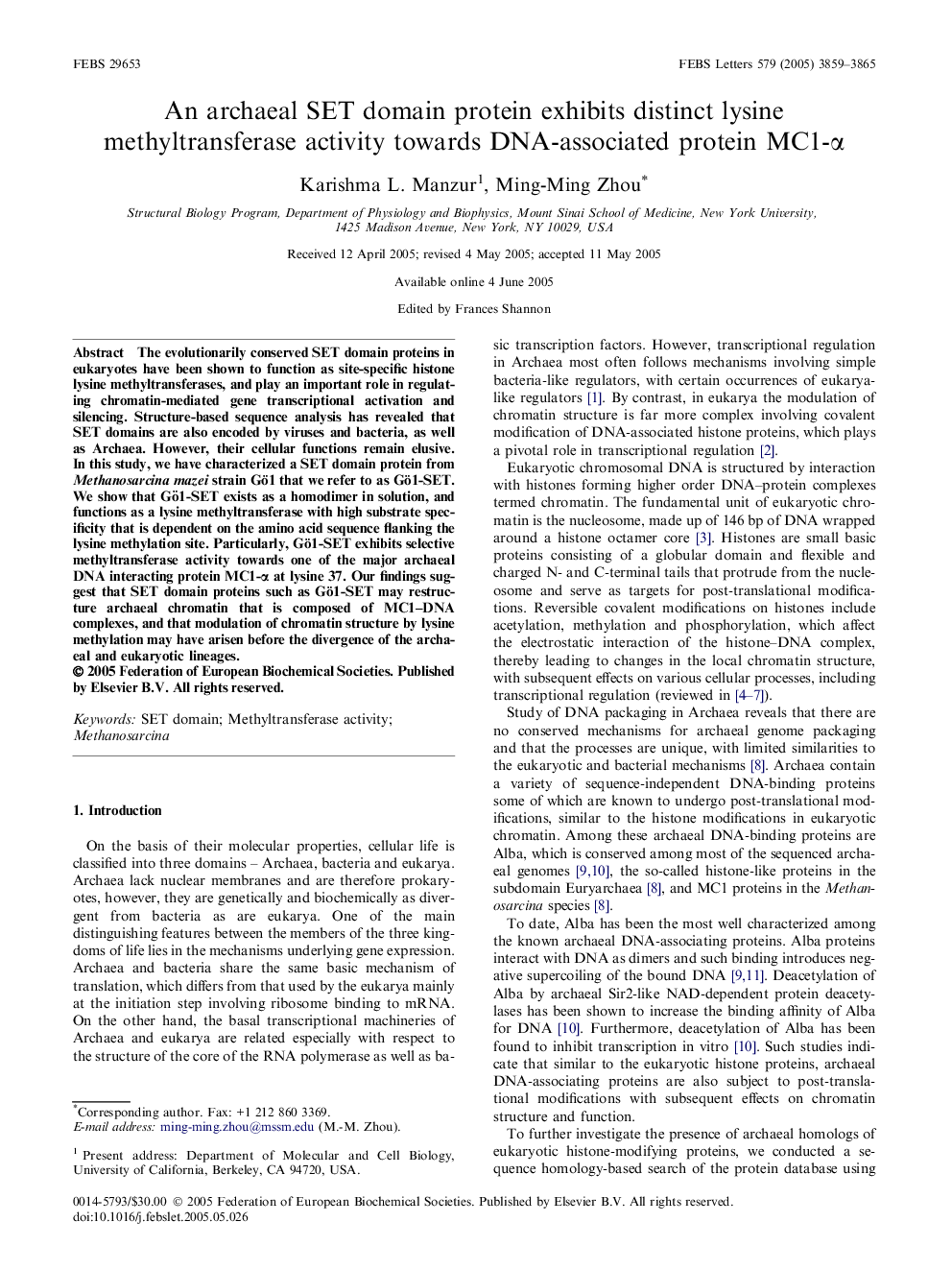| Article ID | Journal | Published Year | Pages | File Type |
|---|---|---|---|---|
| 2052463 | FEBS Letters | 2005 | 7 Pages |
The evolutionarily conserved SET domain proteins in eukaryotes have been shown to function as site-specific histone lysine methyltransferases, and play an important role in regulating chromatin-mediated gene transcriptional activation and silencing. Structure-based sequence analysis has revealed that SET domains are also encoded by viruses and bacteria, as well as Archaea. However, their cellular functions remain elusive. In this study, we have characterized a SET domain protein from Methanosarcina mazei strain Gö1 that we refer to as Gö1-SET. We show that Gö1-SET exists as a homodimer in solution, and functions as a lysine methyltransferase with high substrate specificity that is dependent on the amino acid sequence flanking the lysine methylation site. Particularly, Gö1-SET exhibits selective methyltransferase activity towards one of the major archaeal DNA interacting protein MC1-α at lysine 37. Our findings suggest that SET domain proteins such as Gö1-SET may restructure archaeal chromatin that is composed of MC1–DNA complexes, and that modulation of chromatin structure by lysine methylation may have arisen before the divergence of the archaeal and eukaryotic lineages.
